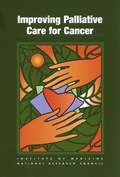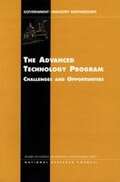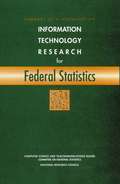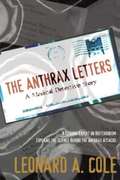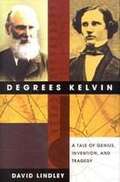- Table View
- List View
Improving Palliative Care for Cancer
by Institute of Medicien National Research CouncilIn our society’s aggressive pursuit of cures for cancer, we have neglected symptom control and comfort care. Less than one percent of the National Cancer Institute’s budget is spent on any aspect of palliative care research or education, despite the half million people who die of cancer each year and the larger number living with cancer and its symptoms. Improving Palliative Care for Cancer examines the barriers—scientific, policy, and social—that keep those in need from getting good palliative care. It goes on to recommend public- and private-sector actions that would lead to the development of more effective palliative interventions; better information about currently used interventions; and greater knowledge about, and access to, palliative care for all those with cancer who would benefit from it.
The Advanced Technology Program: Challenges and Opportunities
by Board On Science Technology Economic Policy National Research CouncilThe National Academies Press (NAP)--publisher for the National Academies--publishes more than 200 books a year offering the most authoritative views, definitive information, and groundbreaking recommendations on a wide range of topics in science, engineering, and health. Our books are unique in that they are authored by the nation's leading experts in every scientific field.
SUMMARY OF A WORKSHOP ON INFORMATION TECHNOLOGY RESEARCH for Federal Statistics
by National Research Council Committee on National Statistics Compature Science Telecommunications BoardSUMMARY OF A WORKSHOP ON INFORMATION TECHNOLOGY RESEARCH for Federal Statistics
Storms From The Sun: The Emerging Science Of Space Weather
by Michael J. Carlowicz Ramon E. LopezFrom the casual conversation starter to the 24-hour cable channels and Web sites devoted exclusively to the subject, everyone talks about weather. There’s even weather in space—and it’s causing major upsets to our modern technological world. Space weather is all around us. There are no nightly news reports on space weather (yet), but we’re rapidly developing the tools necessary to measure and observe trends in cosmic meteorology. New probes are going on-line that help us monitor the weather taking place miles above the Earth. But why does space weather matter? It doesn’t affect whether we bring an umbrella to work or require us to monitor early school closings. It’s far, far away and of little concern to us . . . right? March 13, 1989. The Department of Defense tracking system that keeps tabs on 8,000 objects orbiting Earth suddenly loses track of 1,300 of them. In New Jersey, a $10 million transformer is burned up by a surge of extra current in the power lines. Shocks to a power station in Quebec leave 6 million people without electricity. New England power stations struggle to keep their power grid up. Listeners tuning in to their local stations in Minnesota hear the broadcasts of the California Highway Patrol. Residents of Florida, Mexico, and the Grand Cayman Islands see glowing curtains of light in the sky. All of these bizarre, and seemingly unconnected, events were caused by a storm on the Sun and a fire in the sky. A series of solar flares and explosions had launched bolts of hot, electrified gas at the Earth and stirred up the second largest magnetic storm in recorded history. Before rockets and radio and the advent of other modern devices, we probably would never have noticed the effects of this space storm. But in today’s electrically powered, space-faring world, the greatest space storm of the twenty-second solar maximum rang like a wake-up call. And we are now in the midst of another solar maximum, the effects of which are expected to be felt all the way through the year 2004. Storms from the Sun explores the emerging physical science of space weather and traces its increasing impact on a society that relies on space-based technologies. Authors Carlowicz and Lopez explain what space weather really means to us down here—and what it may mean for future explorations and colonization of distant worlds. By translating the findings of NASA and other top scientists into fascinating and accessible descriptions of the latest discoveries, we are privy to some of the most closely held secrets that the solar–terrestrial system has to offer.
Biomarkers: Medical and Workplace Applications
by Mortimer L. Mendelsohn Lawrence C. Mohr John P. PeetersA 38-year-old man who works in a factory applying coatings reports progressive breathing difficulties. A 45-year-old woman attributes her cough to copier "fumes."What are the prospects that compound-specific or diagnostically useful biomarkers can be developed and used for the benefit of workers like these and their employers? What promise do biomarkers of susceptibility offer for reducing risk to occupational exposures? What are the legal and ethical issues associated with the use of such biomarkers?These questions are explored in detail in this volume, which provides a comprehensive report on current and anticipated development in the application of biomarkers.Leading investigators present data, provide expert analyses, and make recommendations in the areas of: Dosimetry and physical measurement of exposure.Use of chromosome aberrations, adducts, and gene mutations as measurement of exposure and response.Metabolic susceptibility.Organ- and system-specific biomarkers.What biomarkers may reveal about carcinogenesis. The book also explores the societal and ethical issues of using biomarkers in the workplace, military, courtroom, and other settings.
Double-hull Tanker Legislation: An Assessment Of The Oil Pollution Act Of 1990
by Committee on Oil Pollution Act of 1990 (Section 4115) Implementation ReviewThe passage of the Oil Pollution Act of 1990 (OPA 90) by Congress and subsequent modifications of international maritime regulations resulted in a far-reaching change in the design of tank vessels. Double-hull rather than single-hull tankers are now the industry standard, and nearly all ships in the world maritime oil transportation fleet are expected to have double hulls by about 2020.This book assesses the impact of the double hull and related provisions of OPA 90 on ship safety, protection of the marine environment, and the economic viability and operational makeup of the maritime oil transportation industry. The influence of international conventions on tank vessel design and operation is addressed. Owners and operators of domestic and international tank vessel fleets, shipyard operators, marine architects, classification societies, environmentalists, and state and federal regulators will find this book useful.
Cooperating with Nature: Confronting Natural Hazards with Land-Use Planning for Sustainable Communities
by Raymond J. BurbyThis volume focuses on the breakdown in sustainability--the capacity of the planet to provide quality of life now and in the future--that is signaled by disaster. The authors bring to light why land use and sustainability have been ignored in devising public policies to deal with natural hazards. They lay out a vision of sustainability, concrete suggestions for policy reform, and procedures for planning. The book chronicles the long evolution of land-use planning and identifies key components of sustainable planning for hazards. Stressing the importance of balance in land use, the authors offer principles and specific reforms for achieving their visions of sustainability.
Paying the Price: The Status and Role of Insurance Against Natural Disasters in the United States
by Howrord Kunreuther Richard J. RothThis book considers the effectiveness of insurance coverage for low-probability, high-consequence events such as natural disasters--and how insurance programs can successfully be used with other policy tools, such as building codes and standards, to encourage effective loss reduction measures.The authors discuss the reasons for the dramatic increase in insured losses from natural disasters since 1989 and the concern that insurers have about their ability to provide coverage against more such events in the future. It addresses why there has been an increasing demand for hazards insurance, what types of coverage private insurers are willing to offer, and the role of reinsurance and private-/public-sector initiatives at the state and federal levels for providing protection to victims of natural disasters.Detailed case studies of the challenges facing Florida in the wake of Hurricane Andrew in 1992 and California following the Northridge earthquake in 1994 reveal the challenges facing the insurance industry as well as other concerned stakeholders. The National Flood Insurance Program illustrates how a public-/private-sector partnership can mitigate damages and provide financial protection to victims. The book identifies new initiatives for reducing future losses and providing funds for recovery through cooperation by the relevant parties.
Review of the Research Program of the Partnership for a New Generation of Vehicles: Fifth Report
by National Research CouncilThis fifth review of the Partnership for a New Generation of Vehicles assesses progress made in the program towards the development of high fuel economy vehicles. One of the goals of the program is to develop midsize sedans with up to three times the fuel economy of today's vehicles. Concept vehicles are slated for 2000 and production prototypes for 2004.The book addresses engine technologies, batteries for energy storage, fuel cells, lightweight materials, fuels, emissions control systems, power electronics, and vehicle systems engineering.
Global Perspectives for Local Action: Using TIMSS to Improve U.S. Mathematics and Science Education
by National Research CouncilThe Third International Mathematics and Science Study (TIMSS) raised the alarm about U.S. mathematics and science education. Most Americans are now aware that U.S. students lag behind their peers in other developed nations. In one state, the legislature reacted by lengthening the school year, assuming that more time on academic content would boost student performance. Some educators have fixed the blame on the mathematics and science curricula typically used in U.S. schools.Does the problem lie in the curricula, instruction, or the system of support available to teachers? This book presents the first comprehensive analysis of TIMSS study--a half-million students from 15,000 schools around the world. It presents detailed reports on three major aspects of education, including curriculum issues, teaching practices, and school support.
Statistics, Testing, and Defense Acquisition: New Approaches and Methodological Improvements
by Panel on Statistical Methods for Testing Evaluating Defense SystemsFor every weapons system being developed, the U.S. Department of Defense (DOD) must make a critical decision: Should the system go forward to full-scale production? The answer to that question may involve not only tens of billions of dollars but also the nation's security and military capabilities. In the milestone process used by DOD to answer the basic acquisition question, one component near the end of the process is operational testing, to determine if a system meets the requirements for effectiveness and suitability in realistic battlefield settings. Problems discovered at this stage can cause significant production delays and can necessitate costly system redesign.This book examines the milestone process, as well as the DOD's entire approach to testing and evaluating defense systems. It brings to the topic of defense acquisition the application of scientific statistical principles and practices.
Spills of Nonfloating Oils: Risk and Response
by National Research CouncilIn the Coast Guard Authorization Act of 1996, the United States Coast Guard (USCG) was directed to assess the risk of spills for oils that may sink or be negatively buoyant, to examine and evaluate existing cleanup technologies, and to identify and appraise technological and financial barriers that could impede a prompt response to such spills. The USCG requested that the National Research Council (NRC) perform these tasks. In response to this request, the NRC established the Committee on the Marine Transportation of Heavy Oils.
Occupational Health and Safety in the Care and Use of Research Animals
by Committee on Occupational Safety Health in Research Animal FacilitiesMuch has been written about the care of research animals. Yet little guidance has appeared on protecting the health and safety of the people who care for or use these animals.This book, an implementation handbook and companion to Guide For the Care and Use of Laboratory Animals, identifies principles for building a program and discusses the accountability of institutional leaders, managers, and employees for a program's success. It provides a detailed description of risks-- physical and chemical hazards, allergens and zoonoses, and hazards from experiments--which will serve as a continuing reference for the laboratory.The book offers specific recommendations for controlling risk through administrative procedures, facility design, engineering controls, and periodic evaluations. The volume focuses on the worker, with detailed discussions of work practices, the use of personal protective gear, and the development of an emergency response plan.This handbook will be invaluable to administrators, researchers, and employees in any animal research facility. It will also be of interest to personnel in zoos, animal shelters, and veterinary facilities.
Biodiversity II: Understanding and Protecting Our Biological Resources
by Marjorie L. Reaka-Kudla Don E. Wilson Edward O. WilsonThe book before you . . . carries the urgent warning that we are rapidly altering and destroying the environments that have fostered the diversity of life forms for more than a billion years.With those words, Edward O. Wilson opened the landmark volume Biodiversity (National Academy Press, 1988). Despite this and other such alarms, species continue to vanish at a rapid rate, taking with them their genetic legacy and potential benefits. Many disappear before they can even be identified.Biodiversity II is a renewed call for urgency. This volume updates readers on how much we already know and how much remains to be identified scientifically. It explores new strategies for quantifying, understanding, and protecting biodiversity, including New approaches to the integration of electronic data, including a proposal for a U.S. National Biodiversity Information Center.Application of techniques developed in the human genome project to species identification and classification.The Gap Analysis Program of the National Biological Survey, which uses layered satellite, climatic, and biological data to assess distribution and better manage biodiversity.The significant contribution of museum collections to identifying and categorizing species, which is essential for understanding ecological function and for targeting organisms and regions at risk. The book describes our growing understanding of how megacenters of diversity (e.g., rainforest insects, coral reefs) are formed, maintained, and lost; what can be learned from mounting bird extinctions; and how conservation efforts for neotropical primates have fared. It also explores ecosystem restoration, sustainable development, and agricultural impact.Biodiversity II reinforces the idea that the conservation of our biological resources is within reach as long as we pool resources; better coordinate the efforts of existing institutions--museums, universities, and government agencies--already dedicated to this goal; and enhance support for research, collections, and training. This volume will be important to environmentalists, biologists, ecologists, educators, students, and concerned individuals.
Environmental Cleanup at Navy Facilities: Risk-Based Methods
by National Research CouncilThe fiscal and technological limitations associated with cleaning up hazardous waste sites to background conditions have prompted responsible parties to turn to risk-based methods for environmental rememdiation.Environmental Cleanup at Navy Facilities reviews and critiques risk-based methods, including those developed by the U.S. Environmental Protection Agency and the American Society of Testing and Materials. These critiques lead to the identification of eleven criteria that must be part of any risk-based methodology adopted by the Navy, a responsible party with a large number of complex and heavily contaminated waste sites. January
Observations on the President's Fiscal Year 1999 Federal Science and Technology Budget
by Committee on Science Engineering Public PolicyA report on Observations on the President's Fiscal Year 1999 Federal Science and Technology Budget
Managing Managed Care: Quality Improvement In Behavioral Health
by Committee on Quality Assurance Accreditation Guidelines for Managed Behavioral Health CareManaged care has produced dramatic changes in the treatment of mental health and substance abuse problems, known as behavioral health. Managing Managed Care offers an urgently needed assessment of managed care for behavioral health and a framework for purchasing, delivering, and ensuring the quality of behavioral health care. It presents the first objective analysis of the powerful multimillion-dollar accreditation industry and the key accrediting organizations.Managing Managed Care draws evidence-based conclusions about the effectiveness of behavioral health treatments and makes recommendations that address consumer protections, quality improvements, structure and financing, roles of public and private participants, inclusion of special populations, and ethical issues.The volume discusses trends in managed behavioral health care, highlighting the emerging role of the purchaser. The committee explores problems of overlap and fragmentation in the delivery of behavioral health care and discusses the issue of access, a special concern when private systems are restricted and public systems overburdened.Highly applicable to the larger health care system, this volume will be of particular interest to all stakeholders in behavioral health--federal and state policymakers, public and private purchasers, health care providers and administrators, consumers and consumer advocates, accrediting organizations, and health services researchers.
Veterans and Agent Orange: Update 1998
by Institute of MedicineThird in a series of six congressionally mandated studies occurring biennially, this book is an updated review and evaluation of the available scientific evidence regarding the statistical association between exposure to herbicides used in Vietnam and various adverse health outcomes suspected to be linked with such exposures. As part of the review, the committee convened a workshop at which issues surrounding the reanalysis and the combination of existing data on the health effects of herbicide and dioxin exposure were addressed. This book builds upon the information developed by the IOM committees responsible for the 1994 original report, Veterans and Agent Orange, and Veterans and Agent Orange: Update 1996, but will focus on scientific studies and other information developed since the release of these reports. The two previous volumes have noted that sufficient evidence exists to link soft tissue sarcoma, non-Hodgkin's lymphoma, Hodgkin's disease, and chloracne with exposure. The books also noted that there is "limited or suggestive" evidence to show an association with exposure and a neurological disorder in veterans and with the congenital birth defect spina bifida in veterans' children. This volume will be critically important to both policymakers and physicians in the federal government, Vietnam veterans and their families, veterans organizations, researchers, and health professionals.
Grading the Nation's Report Card: Evaluating NAEP and Transforming the Assessment of Educational Progress
by National Research CouncilSince the late 1960s, the National Assessment of Educational Progress (NAEP)--the nation's report card--has been the only continuing measure of student achievement in key subject areas. Increasingly, educators and policymakers have expected NAEP to serve as a lever for education reform and many other purposes beyond its original role.Grading the Nation's Report Card examines ways NAEP can be strengthened to provide more informative portrayals of student achievement and the school and system factors that influence it. The committee offers specific recommendations and strategies for improving NAEP's effectiveness and utility, including: Linking achievement data to other education indicators.Streamlining data collection and other aspects of its design.Including students with disabilities and English-language learners.Revamping the process by which achievement levels are set.The book explores how to improve NAEP framework documents--which identify knowledge and skills to be assessed--with a clearer eye toward the inferences that will be drawn from the results.What should the nation expect from NAEP? What should NAEP do to meet these expectations? This book provides a blueprint for a new paradigm, important to education policymakers, professors, and students, as well as school administrators and teachers, and education advocates.
THE ANTHRAX LETTERS: A Medical Detective Story
by Leonard A. ColeAt 2:00am on October 2, 2001, Robert Stevens entered a hospital emergency room. Feverish, nauseated, and barely conscious, no one knew what was making him sick. It was the doctors and public health officials who solved this medical mystery. Stevens was the first fatal victim of bioterrorism in America. The events of September 11th and the anthrax attacks that followed only three weeks later were horrifying. Many of us felt we were living in a world gone mad. Already shaken by the images of jetliners deliberately flown into the Twin Towers at the World Trade Center, we were soon scared to open our mail. No longer could we look forward to birthday wishes or holiday postcards. We couldn’t even safely face the delivery of our monthly bills. We had now become literally afraid of the microbial menace that could be lurking in our mailboxes. This time terror had struck close to home—to everyone’s home. But behind the panic and the politics was a key line of defense. While the police and FBI frantically investigated a crime, there were other professionals at work, conducting their own painstaking inquiry – medical and scientific detectives hot on the trail of deadly organisms deliberately set loose in the postal system. Modern heroes in a quickly changing world, the public health officials, physicians, researchers, and scientists who staff our hospitals, clinics, and laboratories will be the first responders on the scene of any future biowarfare event. Conducting his own detective work, bioterrorism expert Leonard Cole has composed a series of fascinating stories that get to the heart of all the noisy sound bytes and hysterical headlines. Cole is the only person outside law enforcement to have interviewed every one of the surviving inhalation-anthrax victims, along with the relatives, friends, and associates of those who died, as well as the public health officials, scientists, researchers, hospital workers, and treating physicians – indeed, anyone who has something of value to add to the story. Speaking through their voices, the narrative reflects the tension and emotions stirred by the events from the fall of 2001. Fast paced and riveting, this minute-by-minute chronicle of the anthrax attacks recounts more than a history of recent current events, it uncovers the untold and perhaps even more important story of how scientists, doctors, and researchers perform life-saving work under intense pressure and public scrutiny. The Anthrax Letters amply demonstrates how vulnerable America and the world really were in 2001. It also shows quite clearly how scientific research promises to strengthen our ability to address the challenges we must meet in the future.
we're friends, right?: INSIDE KIDS' CULTURE
by William A. CorsaroSociologists often study exotic cultures by immersing themselves in an environment until they become accepted as insiders. In this fascinating account by acclaimed researcher William A. Corsaro, a scientist "goes native" to study the secret world of children.Here, for the first time, are the children themselves, heard through an expert who knows that the only way to truly understand them is by becoming a member of their community. That's just what Corsaro did when he traded in his adult perspective for a seat in the sandbox alongside groups of preschoolers.Corsaro's journey of discovery is as fascinating as it is revealing. Living among and gaining the acceptance of children, he gradually comes to understand that a child's world is far more complex than anyone ever suspected. He documents a special culture, unique unto itself, in which children create their own social structures and exert their own influences.At a time when many parents fear that they don't spend enough time with their children, and experts debate the best path to healthy development, seeing childhood through the eyes of a child offers parents and caregivers fresh and compelling insights. Corsaro calls upon all adults to appreciate, embrace, and savor their children's culture. He asks us to take a cue from those we hold so precious and understand that "we're all friends, right?"
Degrees Kelvin: A Tale Of Genius, Invention, And Tragedy
by David LindleyLORD KELVIN. In 1840, a precocious 16-year-old by the name of William Thomson spent his summer vacation studying an extraordinarily sophisticated mathematical controversy. His brilliant analysis inspired lavish praise and made the boy an instant intellectual celebrity. <P> As a young scholar William dazzled a Victorian society enthralled with the seductive authority and powerful beauty of scientific discovery. At a time when no one really understood heat, light, electricity, or magnetism, Thomson found key connections between them, laying the groundwork for two of the cornerstones of 19th century science -- the theories of electromagnetism and thermodynamics. Charismatic, confident, and boyishly handsome, Thomson was not a scientist who labored quietly in a lab, plying his trade in monkish isolation. When scores of able tinkerers were flummoxed by their inability to adapt overland telegraphic cables to underwater, intercontinental use, Thomson took to the high seas with new equipment that was to change the face of modern communications. And as the world's navies were transitioning from wooden to iron ships, they looked to Thomson to devise a compass that would hold true even when surrounded by steel. <P> Gaining fame and wealth through his inventive genius, Thomson was elevated to the peerage by Queen Victoria for his many achievements. He was the first scientist ever to be so honored. Indeed, his name survives in the designation of degrees Kelvin, the temperature scale that begins with absolute zero, the point at which atomic motion ceases and there is a complete absence of heat. <P> Sir William Thomson, Lord Kelvin, was Great Britain's unrivaled scientific hero. But as the century drew to a close and Queen Victoria's reign ended, this legendary scientific mind began to weaken. He grudgingly gave way to others with a keener, more modern vision. But the great physicist did not go quietly. With a ready pulpit at his disposal, he publicly proclaimed his doubts over the existence of atoms. He refused to believe that radioactivity involved the transmutation of elements. And believing that the origin of life was a matter beyond the expertise of science and better left to theologians, he vehemently opposed the doctrines of evolution, repeatedly railing against Charles Darwin. Sadly, this pioneer of modern science spent his waning years arguing that the Earth and the Sun could not be more than 100 million years old. And although his early mathematical prowess had transformed our understanding of the forces of nature, he would never truly accept the revolutionary changes he had helped bring about, and it was others who took his ideas to their logical conclusion. <P> In the end Thomson came to stand for all that was old and complacent in the world of 19th century science. Once a scientific force to be reckoned with, a leader to whom others eagerly looked for answers, his peers in the end left him behind -- and then meted out the ultimate punishment for not being able to keep step with them. For while they were content to bury him in Westminster Abbey alongside Isaac Newton, they used his death as an opportunity to write him out of the scientific record, effectively denying him his place in history. Kelvin's name soon faded from the headlines, his seminal ideas forgotten, his crucial contributions overshadowed. Destined to become the definitive biography of one of the most important figures in modern science, Degrees Kelvin unravels the mystery of a life composed of equal parts triumph and tragedy, hubris and humility, yielding a surprising and compelling portrait of a complex and enigmatic man.
SAVING WOMEN'S LIVES: Strategies for Improving Breast Cancer Detection and Diagnosis
by Institute of Medicine National Research Council of the National AcademiesThe National Academies Press (NAP)--publisher for the National Academies--publishes more than 200 books a year offering the most authoritative views, definitive information, and groundbreaking recommendations on a wide range of topics in science, engineering, and health. Our books are unique in that they are authored by the nation's leading experts in every scientific field.
The Great Brain Debate: Nature Or Nurture?
by John E. DowlingHow much of our behavior is determined by our genes and how much by our environment? Fiercely debated but not fully resolved, we continue to grapple with this nature-vs.-nurture question. But data from the study of the developing and adult brain are providing us with new ways of thinking about this issue – ways that, finally, promise answers. Whether our personality, our intelligence, and our behavior are more likely to be shaped and affected by our environment or our genetic coding is not simply an idle question for today’s researchers. There are tremendous consequences to understanding the crucial role that each plays. How we raise and educate our children, how we treat various mental diseases or conditions, how we care for our elderly – these are just some of the issues that can be informed by a better and more complete understanding of brain development. John Dowling, eminent neuroscience researcher, looks at these and other important issues. The work that is being done by scientists on the connection between the brain and vision, as well as the ways in which our brains help us learn new languages, are particularly revealing. From this groundbreaking new research we are able to gain startling new insights into how the brain functions and how it can (or cannot) be molded and changed. By studying the brain across the spectrum of our lives, from infancy through adulthood and into old age, we see how the brain develops, transforms, and adjusts through the years. Looking specifically at early development and then at the opportunities for additional learning and development as we grow older, we learn more about the ways in which both nature and nurture play key roles over the course of a human lifetime.
The Depths Of Space: The Story Of The Pioneer Planetary Probes
by Mark WolvertonThe first spacecraft to explore the secrets of the Sun, Jupiter, Saturn, and the void beyond Pluto, the Pioneer space probes have been the trailblazers of the space age, truly going where no man has gone before. Emblazoned with the nude figures of a man and a woman, etched representations of our human form, the Pioneer generation of probes were aptly named. Launched into the inky depths of space, they were more than mere machines, they were humanity’s first emissaries into deep space. And the pictorial inscriptions that adorned the crafts embodied the hopes and dreams of everyone involved in the Pioneer program. They were our humble attempt to communicate with the extraterrestrial intelligent life we imagined the probes might encounter … they were our message in a bottle. Perhaps the most efficient, reliable, and cost effective program to come out of NASA, the Pioneer missions are a shining example of how a small and talented group of people can, against all odds, pull something off that has never been done before. Indeed, more than thirty years after its launch in 1972, Pioneer 10 is still cruising into interstellar space, sending back data as it courses through the galaxy while Pioneer 6, in solar orbit, is more than 35 years old and humankind’s oldest functioning spacecraft. But despite their enduring contributions, the Pioneer project remains a footnote in space history, little more than a humble prologue to its inheritors. The Depths of Space recounts the long overdue history of Pioneer both as a scientific and technological achievement and as the story of the exceptional people who made the program possible. This tight narrative captures the black-coffee buzz of full-throttle, deadline-driven production, the sharp, intense thrill of discovery, the pang of anxiety that accompanies looming danger and ultimate loss, and the satisfaction and pride of creating an enduring legacy.
